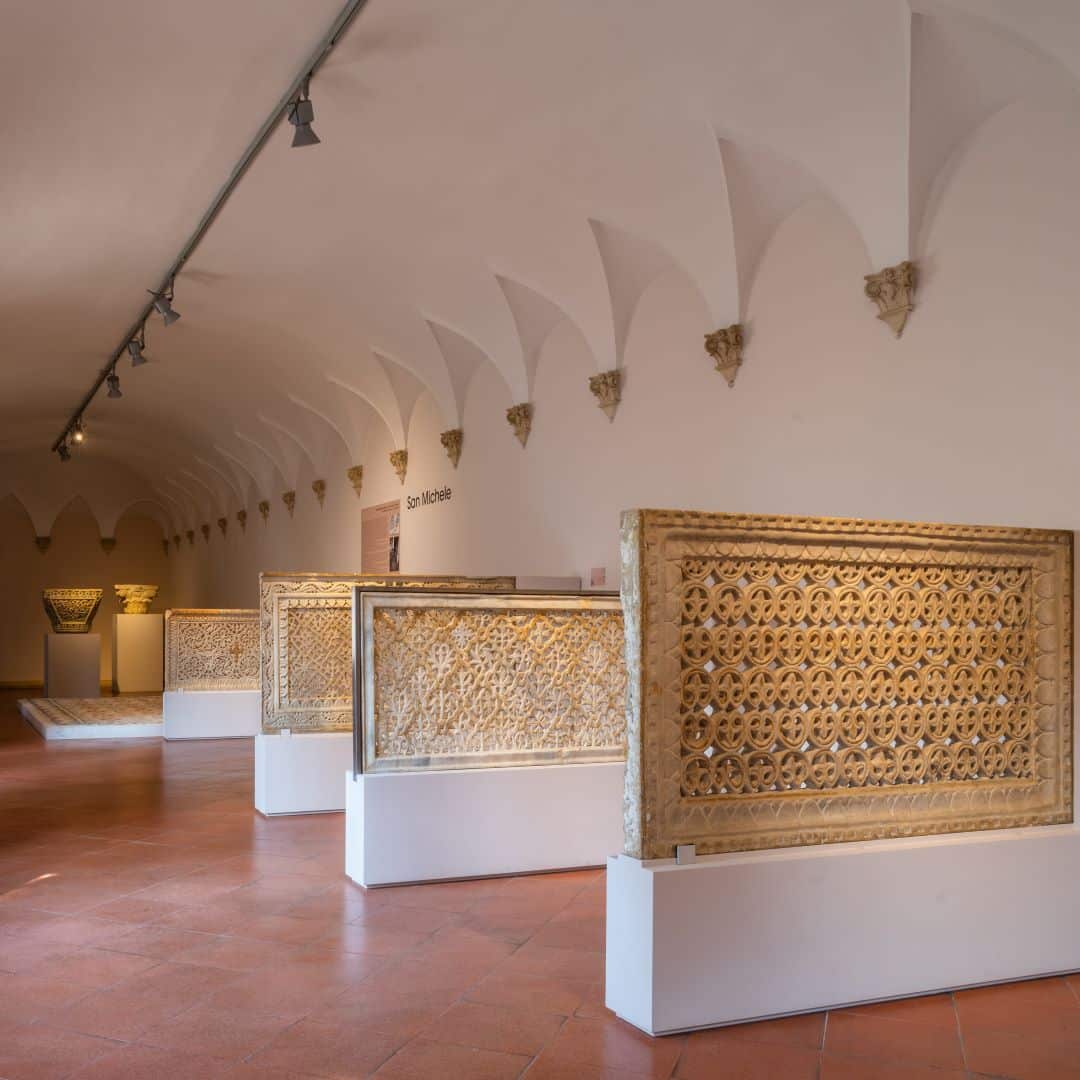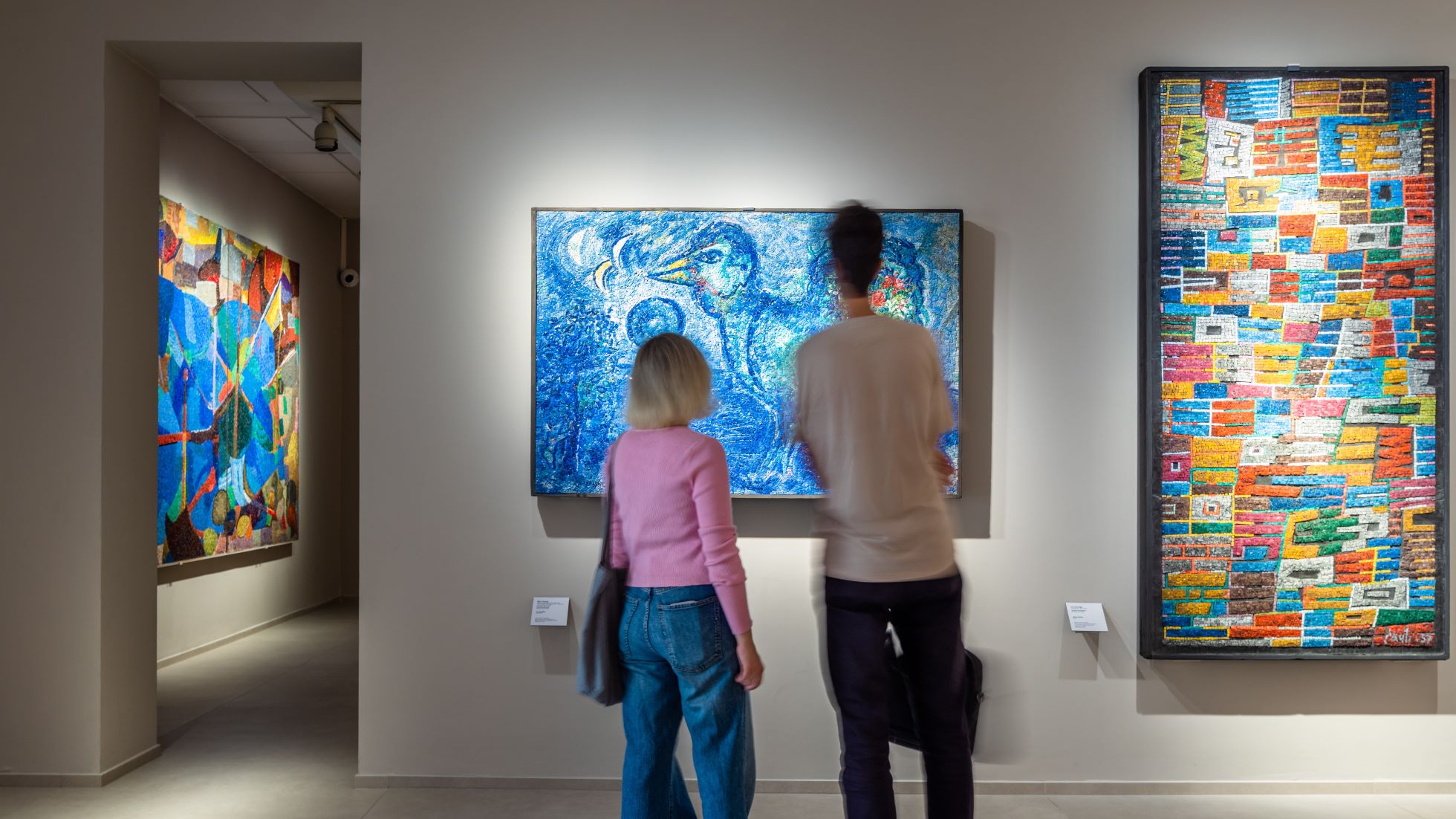
Mausloeum of Galla Placidia
The Mausoleum of Galla Placidia, built in 425 A.D., with its unique early Christian mosaics, is one of the eight amazing UNESCO World Heritage sites in the city of Ravenna.






The halls of the museum display the historical evolution of Ravenna through archaeological finds and important artistic masterpieces. On display are valuable floor mosaics from lost churches and palaces and an extraordinary sinopia detached from the apse of the basilica of Sant’Apollinare in Classe.
It is housed inside the former convent of the basilica of San Vitale, which stands next to the splendid Basilica di San Vitale and to the Mausoleo di Galla Placidia. The first nucleus was born between 1877 and 1889 thanks to the sculptor Enrico Pazzi, who wanted to donate a modern Civic Museum to the city. It was initially formed by the many objects collected and preserved by the monks of Classe. From 1885 the museum became National, enriching itself with precious materials that emerged during numerous archaeological excavation campaigns or fortuitous discoveries. Since 1913 it has been in its present location. A visit to the National Museum will let you understand the splendor of the city over the centuries and discover unexpected details. Not only an entire cycle of detached frescoes from the 14th century by Pietro da Rimini–a shining example of 14th-century painting– but also Byzantine fabrics, valuable paintings, ivories, sculptures, terracotta, weapons, coins and a pharmacy. Unique are the ornamental marbles, the floor mosaic from the lost church of San Michele in Africisco (6th century) and a preparatory wall drawing in red pigment, the sinopia, detached from the apse of the basilica of Sant’Apollinare in Classe in the 1970s. A section of the museum itinerary is dedicated to contemporary mosaics, in which many works are donated by important artists as Felice Nittolo, Marco De Luca, CaCO3, Sara Vasini and others artists.
Via San Vitale, 17, 48121 Ravenna RA
Ticket: € 6
Concession*: € 2
* Valid for persons aged between 18 and 25 years old
Every first Sunday of the month admission to the monument is free.
Furthermore, also on February 7th, April 25th, June 2nd, July 23rd, August 30th, October 14th (Notte d’oro), November 4th and December 7th admission is free.
https://www.vivaticket.com/it/ticket/museo-nazionale/272191> National Museum + Basilica of Sant’Apollinare in Classe + Mausoleum of Theoderic: €10.
The ticket can be purchased online or at the ticket office of all the museums and sites managed by Fondazione RavennAntica.
Il biglietto è acquistabile online o presso le biglietterie di tutti i musei e le aree gestiste dalla Fondazione RavennAntica
Ogni prima domenica del mese l’ingresso al museo è gratuito.
Inoltre, anche il 7 febbraio, 25 aprile, 2 giugno, 23 luglio, 30 agosto, 14 ottobre (Notte d’Oro), 4 novembre e 7 dicembre l’accesso è gratuito.
Sono, inoltre, previste ulteriori agevolazioni per l’ingresso.

Select a language
Selected
Other languages